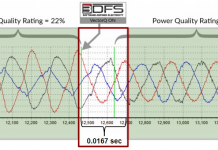Is There a Crack in the (Fire)Wall?
Joyce Pellino Crane
Last December when 325,000 Massachusetts homes went dark for days on end, I finally understood the transformative powers of electricity.
For starters, my hair went limp when the blow dryer didn’t turn on, my laundry piled high, my food froze in the garage, and my stove was stone cold. After five days of living like Pioneer Woman, I got tired of waiting for the utility company to restring snapped cable wires, and checked into a hotel.
The nation’s electric power grid is a hodgepodge of exposed wires, transformers, switching stations, antiquated meters, and power generators. Much of it has not been updated since the 1940`s when it was built for coal-fired technology. Its vulnerability was underscored last winter when as many as one million people, living in seven northeastern states, lost power to an ice glazing under frigid temperature conditions.
A push by the Obama Administration to transform today’s sagging lattice into a smart grid capable of telling consumers about their energy usage and of powering their hybrid vehicles, is giving rise to new hardware. The forthcoming smart grid will be designed for energy efficiency and real-time communications, characterized by smart meters that monitor and regulate energy consumption on the spot, substations with intelligent switches and routers, and new transmission cables with significantly greater capacity then the existing ones.
But the technologies that smarten up the grid, will also make it susceptible to viral attacks, privacy issues, and other security breaches, say some industry observers, and the cost of transforming it will far outpace the government dollars earmarked for its upgrade.
The net cost of transforming from the current grid to a smart one is estimated to run as high as $165 billion over 20 years, or $8.3 billion per years, according to a 2004 report by the Electric Power Research Institute, an independent, non-profit research company. That makes the $11 billion allotted for development of smart grid technologies from the government’s 2009 stimulus package a drop in the bucket and raises questions about the return on investment.
But the networking effects of the power grid promises revenue growth. The same EPRI report estimated the benefit-to-cost ratio to be at least four-to-one, and listed the smart grid’s attributes as: increased power flow, self healing characteristics for a quick recovery, improved power quality, reduced frequency and duration of outages, reduced power plant emissions and other environmental impacts, a safer work environment for utility employees, a better quality of life for North Americans, and increased productivity.
Several companies are manufacturing smart grid technologies that will help accomplish these characteristics. Over the next few days, I’ll take a look at two (RuggedCom, T: RCM, Pink:RUGGF, and American Superconductor, NASDAQ: AMSC), and tell you how their technologies are contributing to the creation of a smart grid.
Coming tomorrow: An interview with a Toronto-based research analyst for RuggedCom, Inc., of Concord, Ontario. (Link broken until publication.)
Joyce Pellino Crane writes at wordtrope.com/blog. She is a Boston Globe correspondent and a business technology analyst for Trender Research. Follow her on Twitter: Wordtrope.








